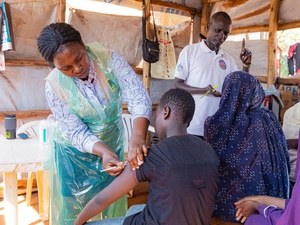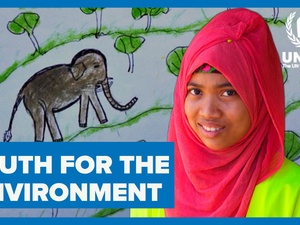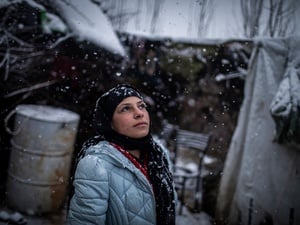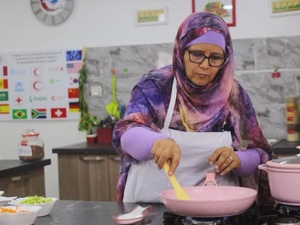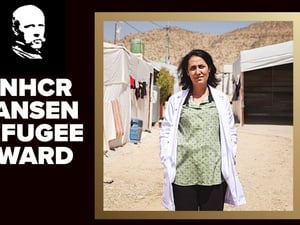Refugee health workers lead COVID-19 battle in Bangladesh camps

Refugee health workers lead COVID-19 battle in Bangladesh camps
Saidul Karim spends his days moving from shelter to shelter along the muddy paths that crisscross Kutupalong refugee settlement in Bangladesh. The families who open their doors to him know him well. He has been visiting them every two weeks since he began volunteering as a community health worker soon after fleeing from Myanmar in 2017.
Saidul is one of over 1,400 Rohingya refugees trained to go door-to-door in the densely populated camps that house some 860,000 Rohingya refugees, sharing information about health and hygiene, looking out for signs of illness, recording births and deaths, and acting as a bridge between refugee communities and health facilities.
The trust Saidul and other volunteers have built with the families they visit has been critical since the first cases of COVID-19 were detected in Cox’s Bazar district in May. They have been able to counter rumours circulating in the camps with accurate information and practical advice.
“People tell us that they are scared,” says Saidul. “They have heard how dangerous the disease is and also that many people around the world are dying.”
"People tell us that they are scared."
Saidul now visits the 150 households in his assigned block every week. He explains to families how they can protect themselves from COVID-19 and what some of the common symptoms of the virus are. For those he identifies as having symptoms, he counsels them to get tested for COVID-19 at a health centre and explains the support they can receive at isolation and treatment facilities.
“We explain to people that if you have symptoms and you are afraid and do not treat it on time, it can affect your whole family as well as the people in your surroundings,” he says.
Haroon, a 55-year-old refugee living in Kutupalong, began to develop COVID-19 symptoms in June and was referred for testing by one of the community health workers. “We didn’t know about the disease, just that it was deadly. The community health volunteers helped me defeat my fear and get proper treatment. I have learned that this disease is curable if proper steps are taken,” he says.
Saidul himself is not immune to the fear of becoming infected but wants to continue serving his community. “We are afraid, but still trying to do our best,” he says. “We are maintaining physical distance, wearing masks and focusing on the importance of our services.”
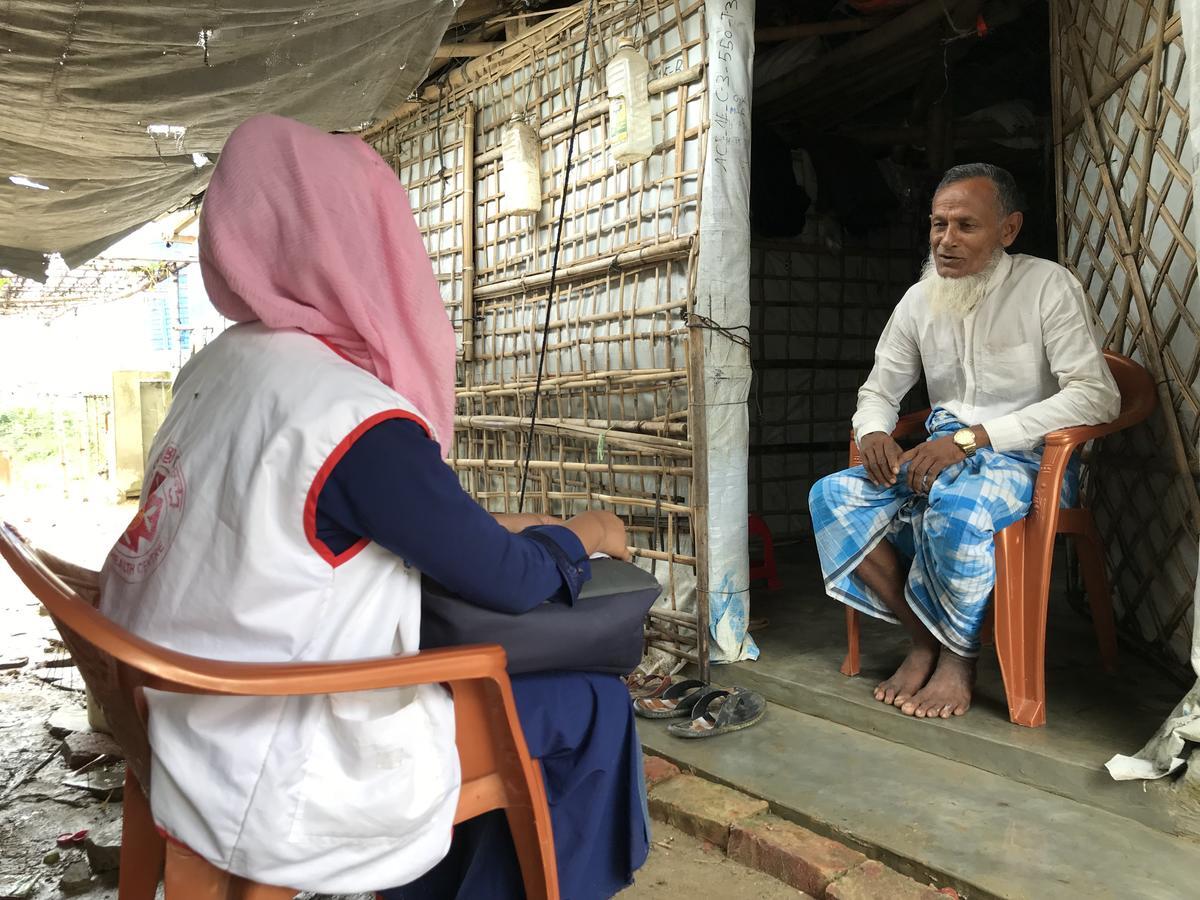
A Rohingya refugee trained as a community health worker visits a household in her community to raise awareness about COVID-19.
While the situation is worrying, so far the number of identified COVID-19 cases amongst the Rohingya refugee population is relatively low at just 62 cases as of 21 July. According to Dr Asma Absari, a technical support officer with the World Health Organization (WHO), “the biggest challenge we are facing is convincing people to get tested. The volunteers help us to reach the community and discuss with them the necessity of getting tested and how to prevent further spread of the disease.”
The community health volunteers’ role has become even more important since humanitarian workers have significantly scaled back their work in the camps to reduce the risk of transmitting the virus.
WHO has worked with UNHCR, the UN Refugee Agency, to train the volunteers on how to identify symptoms associated with COVID-19 so they can refer people for testing. But they must contend with the fear and rumours that have discouraged many people from approaching health facilities.
“Initially, the refugees thought if anybody expresses that they have some COVID-like symptoms, people might attack them, authorities may come to take them away,” explains Dr Nazmus Sakib, a public health associate with UNHCR, who is supporting the coordination of the community health working group.
"The community health workers are the key players who intervene immediately."
“The community health workers are the key players who intervene immediately… They are trying to build trust between the health facility and the community. It is one of their major roles now.”
Building trust also means working with respected figures in the community such as Majhis (community leaders) and Imams (religious leaders) who can pass on important health messages.
“What the volunteers teach us, we tell the same to the people,” says Hafez Muhammed Salim, an Imam who uses the microphone attached to his mosque to broadcast information about the coronavirus.
“If the community health workers were not doing the work they are doing, we would not have known where to go when we are ill. We would have faced a lot of problems,” he adds.
UNHCR has built two isolation and treatment centres, with almost 200 beds for refugees and members of the local community. An intensive care unit for more severe cases has also been established. The facilities are part of a joint effort by the Government and health partners to make a total of 1,900 beds available across the camps and local communities, but if cases increase rapidly, it is possible the capacity of the isolation and treatment centres will be exceeded.
With this in mind, the community health workers are also being trained to provide home-based care to refugees with COVID-19 and to advise them on how to prevent infections between household members. They will also refer affected families for home deliveries of food, fuel and essential items.
“I think this is the best work that I can do for the good of my community,” says Saidul. "I want to continue working as a community health work volunteer because this way I can serve my community and support their wellbeing.”


